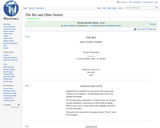
The Bet and Other Short Stories
- Subject:
- English Language Arts
- Secondary English Language Arts
- Material Type:
- Reading
- Author:
- Anton Chekhov
- Date Added:
- 01/15/2019

The Bet and Other Short Stories

A Christmas Carol LessonThis lesson uses the acronym STEAL to teach characterization as students read A Christmas Carol by Charles Dickens. Time Frame: 10 ELA blocks of about 30 min each.
This set of lessons extends over several days and focuses on "The Crisis, No. 1" by Thomas Paine. Students closely read and annotate the text. Students identify and evaluate claims and evidence in the text. Students present their findings to the class. Finally, students collaboratively write short arguments identifying claims and evidence in "The Crisis, No. 1." Students present their arguments to the class, and the class discusses and assesses the arguments.
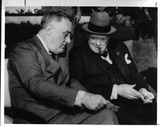
A set of lessons teaching classical appeals strategies (ethos, pathos, logos) and their use. Utilizes exemplar speeches by President Roosevelt ("Day of Infamy," December 8, 1941) and Sir Winston Churchill ("Be Ye Men of Valour" May 13, 1940).Image credit: © National Archives
This set of lessons extends over several days. Students watch a Prezi and take notes about the classical appeals (ethos, pathos, and logos). Students then read and annotate (focusing on the classical appeals) Winston Churchill's "Be Ye Men of Valour" and Franklin Delano Roosevelt's "Pearl Harbor Address to the Nation." Students work in groups to complete a graphic organizer which helps them analyze the classical appeals in the speeches. Finally, students write an analysis of ethos, pathos, and logos in one of the speeches.

This is a context clue lesson plan. It includes a pre-test and post-test and strategies to teach context clues.
Students use the Cornell notes tool (developed by Walter Pauk from Cornell University) to do close reading of informational text.

Students use the Cornell notes tool (developed by Walter Pauk from Cornell University) to gather key ideas, details, and summarize. The source used in this lesson is audio obtained from NPR about the novel Seedfolks by Paul Fleischman.Lesson Image: stevepb.(2015, October 23). Leaf Green [Photograph]. Pixabay. https://pixabay.com/images/id-1001679/

This lesson is the start of a unit on photojournalism and teaches the foundations of photojournalism and composition rules to Journalism students to enable them to create their own effective visuals to add visual elements and interest to Journalism articles.

This lesson is the start of a unit on photojournalism and teaches the foundations of photojournalism and composition rules to Journalism students to enable them to create their own effective visuals to add visual elements and interest to Journalism articles.

This lesson plan asks students to create a new, original film or podcast that is based on a specific element from a text (either a film, written text, or podcast). Students will analyze their chosen text, focusing specifically on character, theme, narrative style, use of sound, or setting analysis. This project will be taught asynchronously over the course of 5-6 class periods.

Research indicates that most standards documents articulate far more content than can be taught in the time available to K–12 teachers. In response, analysts at Marzano Resources sought to identify, as objectively as possible, a focused set of critical concepts for each K–12 grade level in the content areas of English language arts (ELA), mathematics, science, and social studies.
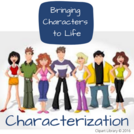
This lesson plan reviews direct and indirect characterizations, which students can use to aid them in writing a character analysis short essay. Students will be introduced to the S.T.E.A.L. method, which they will use to identify a character's traits, motives, and physiological makeup. This resource has been created for secondary levels. This lesson plan can be used to supplement any Literary Element Unit.

Students will use what they have learned about descriptive writing--show don’t tell, vivid verbs and adjectives, sensory details, and figurative language--to write a snapshot detailed description of a picture they find or create. Students select a picture of their choice and then write an extended paragraph.
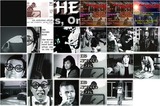
Utilizing their school-issued iPad or personal phone, students will capture their own images to represent literary elements from their personal reading book. This assignment is designed to blend principles from digital photography, design, and reading literature standards to demonstrate deeper understanding and critical thinking skills. This lesson plan was created by Andrea Settle. "The Flying Book Collage" by Antonio TwizShiz Edward is licensed under CC BY-NC-SA 2.0

Students create a digital story about their life or a relative's life. This is done while reading a memoir.

This lesson is to teach students about different apps they can use to create their digital stories based upon the narrative that they wrote. In this lesson, they will explore different video-making apps and begin to create their video using their narrative and storyboards.
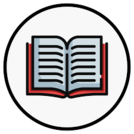
This is a lesson plan template created by Melissa Jensen, High School Library Media Teacher.It walks students through creating a digital story to connect the theme from a book of choice with a personal story.

Students will learn the potential costs and benefits of social media, digital consumption, and our relationship with technology as a society in the three-week lesson. This inquiry based unit of study will answer the following questions:
Essential Question: How can we use science fiction’s ability to predict the future to help humanity?
Supportive Questions 1: What predictions of future development has science fiction accurately made in the past? This can include technology, privacy, medicine, social justice, political, environmental, education, and economic.
Supportive Question 2: What predictions for future development in contemporary science fiction are positive for the future of humanity? What factors need to begin in your lifetime to make these predictions reality?
Supportive Question 3: What predictions for future development in contemporary science fiction are negative for the future of humanity? What factors need to begin in your lifetime to stop these negative outcomes?
(Thumbnail is a screenshot of the OER Commons lesson page, taken 7/26/2022 by Christina Nelson.)
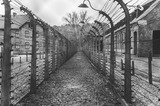
Genuis Hour project idea for ELA researching a topic of student's choice regarding WWII and/or the Holocaust. Preview image Photo by Karsten Winegeart on Unsplash